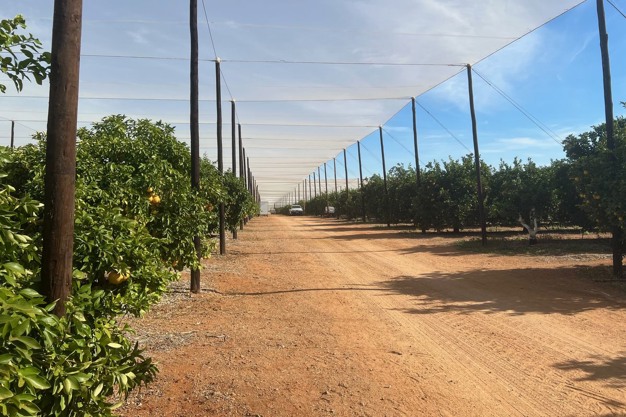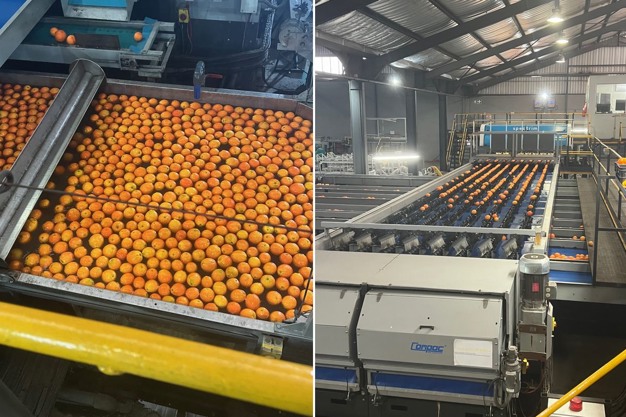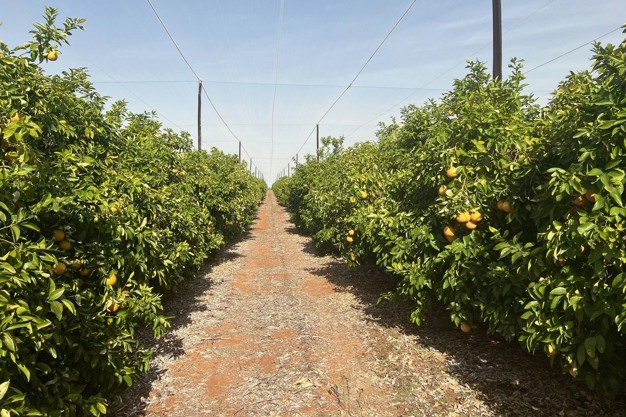Chile, Argentina, Peru, Uruguay, and South Africa are currently all in the market for citrus. What most of these countries seem to have in common this season is the effect of weather conditions. Drought, rain, and wind are having an impact on either volume of product, quality of product, or both.
Chile
Chile's clementine shipments started at a normal time, but acreage is reduced this season. "Due to a drought situation, many growers had to choose which crops to give water to," says Bill Weyland with Seven Seas. "Some growers decided to direct water to other crops and some completely walked away from their crops." As a result, the managed acreage is lower and overall clementine shipments were anticipated to be lower as well. "However, that is not what we are seeing," Weyland said. "Export data shows that a lot of boxes are coming into the U.S."
While volumes of clementines may be higher than anticipated, weather has impacted the quality of the fruit. During the growing season, growers battled drought conditions, but weather patterns changed in the past six weeks and rain came at a time it was least needed. "During harvest, growers faced repeated moments of rain to heavy rain," said Weyland. "While it will help in future seasons, the timing of it wasn't conducive to ensuring high fruit quality for this season."
Clementine shipments from Chile started in May and will continue through the month of June. Lemons also started late May and shipments will continue through October with exports expected to be up this season. "We anticipate an increase as the U.S. is expected to be a good outlet for lemons this summer due to a shortage of small size lemons in the market." In July, Navel oranges will start and volume is expected to be similar to last year. Shipments of late-season mandarins will start early to mid-July and continue through November.

Argentina
Argentina has been shipping lemons since May. It has been a rainy growing season and as a result, the lemons have grown to be larger in size. In addition, the wet conditions are having an impact on the fruit quality. "There have been some problems with arrivals as the shelf-life for lemons from Argentina seems to be shorter this year."
Uruguay
Uruguay, exporter of mainly mandarins and oranges, is facing a similar situation as Chile and Argentina. Rain has impacted harvest and farms have been unreachable. It has resulted in the citrus season being off to slow start and lower volumes are expected to be shipped from Uruguay this season.
Peru
Peru is the only South American citrus growing country that doesn't seem to be impacted by rain during harvest. The country started packing Murcotts one to two weeks earlier than normal. While volumes are expected to be similar to last year, less volume is coming to the U.S. this season. "The country is supporting a very strong domestic market and has found some good outlets for their fruit in Central and South America," Weyland shared.

South Africa
Over to the African continent, weather challenges are also impacting South Africa's citrus production. The country was faced with an unusually warm summer and these high temperatures extended into the harvest time frame longer than usual. As a result, fruit is not coloring up as it should, and growers delayed harvest to give the fruit time to develop color. It caused the harvest of clementines to start about two weeks later and oranges about one week later than normal.
In addition, April windstorms have caused scars on the fruit. As the country adheres to high quality standards, packout rates seem to be much lower than anticipated. Therefore, shipments of early clementines and Navel oranges to the U.S. are expected to be lower this season. The industry is hopeful the later fruit varieties haven't been impacted by the windstorms as much and are free from scars. Nadorcotts, the country's late-season mandarins, are expected to be up in volume by about 10 percent compared to last year. They will be available from the end of July until October with harvest starting two weeks earlier than normal. Volume of Midknights, a late season orange variety, is looking similar to last year. "We will see good volume from late August through October," commented Weyland.
While grapefruit makes up a small percentage of total citrus exports from South Africa, the outlook for the season is good. Harvest started up slow as growers were waiting for the fruit to color up. "Despite a two-week delay, volume is expected to be similar to last year and it is really nice quality fruit." Grapefruit from South Africa will arrive in the U.S. market this week and will be available through October as well.

Demand
The success of the season will depend on whether supply and demand are in balance. "The industry continues to face challenges fighting for the consumer dollar," Weyland commented. "As a result of difficult economic conditions, consumers are careful how they spend their money and try to stretch their dollars as much as possible." Weyland doesn't foresee this pattern change in the short-term. "If anything, they are spending less," he said. "Hopefully, retailers are willing to promote citrus this summer and allow for eye-catching displays as that will certainly help drive demand."
 For more information:
For more information:
Bill Weyland
Seven Seas
Tel: (+1) 732-634-1109
[email protected]
www.sevenseasfruit.com










